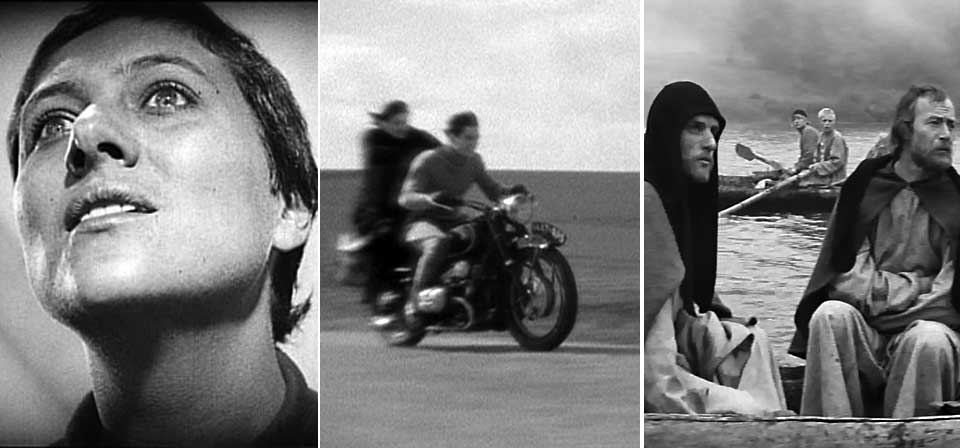Do atheists and agnostics make the best religious films?
Ridley Scott’s Kingdom of Heaven (see last week’s column) might be the atheist director’s most sustained effort at an even-handed treatment of religion — but Scott is far from the only nonbelieving filmmaker to take an interest in thoughtfully exploring religious themes. On the contrary, many of the best cinematic treatments of religious themes come from filmmakers who are nonbelievers, agnostics, even atheists.
Possibly the most noteworthy dramatic examination of the Christian ideal in at least the last quarter century is Xavier Beauvois’ Of Gods and Men (2010), a fact-based drama starring Lambert Wilson and Michael Lonsdale as two of a number of Trappist monks of Tibhirine, Algeria, who were murdered in 1996 in the Algerian civil war after years of living in harmony with their Muslim neighbors. Beauvois is an atheist, but his depiction of the Trappists is an extraordinary homage to the beauty of lived Christian faith at its most winsome: a portrait of life in community and sacrificial service to neighbor; of incarnational and Eucharistic spirituality and the daily rhythms of liturgical and personal prayer; of the dance of faith and doubt and the struggle of discerning God’s will.
For a film even arguably rivaling Beauvois’ rich portrayal of Catholic spirituality and social conscience, one must go back nearly 30 years to Roland Joffé’s 18th-century drama The Mission (1986), starring Robert De Niro and Jeremy Irons. (“A wobbly agnostic” is how Joffé has described himself.) More complex in its depiction of religion than Of Gods and Men, The Mission portrays corrupt church officials siding with Portuguese slavers against dedicated Spanish Jesuits seeking to defend the freedom and dignity of South American converts. It is also a moving exploration of sin, guilt, penance and forgiveness. Both films are notable for their theme of catholicity, of solidarity across cultural and ethnic divides. The Mission was scripted by Robert Bolt, an agnostic if not an atheist, perhaps best known as the writer of A Man for All Seasons (1966). Like The Mission, but with greater clarity and focus, A Man for All Seasons celebrates a learned, principled believer, St. Thomas More, who is betrayed by his society and church officials.
The Italian neorealist pioneer Roberto Rossellini, a self-described “complete atheist,” was responsible for the best film ever made about Francis of Assisi, the lovely, meditative The Flowers of St. Francis (1950), as well as the hard-to-find biblical dramas Acts of the Apostles (1969) and The Messiah (1975). Rossellini’s celebrated classic Open City (1945) includes a heroic priest who aids the underground resistance in Nazi-occupied Rome, making common cause with an atheist resistance leader and even holding out hope for his salvation: “I am a Catholic priest; I believe that anyone fighting for justice and liberty walks in the ways of the Lord. And the ways of the Lord are infinite.” One might see here an attempt at rapprochement between belief and unbelief, not only from the priest as a representative of religion, but also from Rossellini the atheist. To disbelieve, for Rossellini, need not mean to pit oneself against the divine nature one disbelieves in; Rossellini can imagine the God whose existence he denies embracing even unbelievers — such as himself.
That religion is there at all is reason enough for nonreligious filmmakers to take an interest in it. Religion has a prominent place in human history and culture; it is rife with interesting ideas, evocative symbols and a fraught history offering fodder for compelling stories. Even those who reject faith have been shaped by religious culture and communities; telling religious stories can be a way of exploring one’s heritage and fellow human beings. There’s more. In religious themes some find a powerful framework in which to explore ideas of meaning, higher purpose, moral obligation, commitment, sacrifice and a sense of transcendence. The vocabulary and expressions of religion offer access to something many nonbelievers are drawn to. Bolt, for example, seems to have been drawn to Thomas More out of a sense that More could take for granted something valuable that modernity had either lost, or at least had to struggle for in a way that More didn’t. Obviously the heroic example of believers such as More and the monks of Tibhirine is another factor: One need not accept a believer’s religious worldview to admire their moral example informed by faith.
One of the noblest functions of art is the invitation to empathy: an invitation extended not only to the audience, but also to the artist. “I believed in God the whole time I was making Sophie Scholl: The Final Days,” director Marc Rothemund once told me in an interview. Rothemund is an atheist; his “belief” was a matter of placing his talents at the service of his real-life heroine’s story. Even when conflicting worldviews divide us, empathy and imagination can bring us closer together.
Related

Religious filmmakers explore — and cross-examine — faith
Strikingly, where the religious films of nonbelievers often feature idealized religious characters more or less certain in their faith, films by believers often put their religious characters’ faith to a more existential test.
Recent
- SDG’s Top 10 Christmas movies list!
- Crisis of meaning, part 3: What lies beyond the Spider-Verse?
- Crisis of meaning, part 2: The lie at the end of the MCU multiverse
- Crisis of Meaning on Infinite Earths, part 1: The multiverse and superhero movies
- Two things I wish George Miller had done differently in Furiosa: A Mad Max Saga
Home Video
Copyright © 2000– Steven D. Greydanus. All rights reserved.